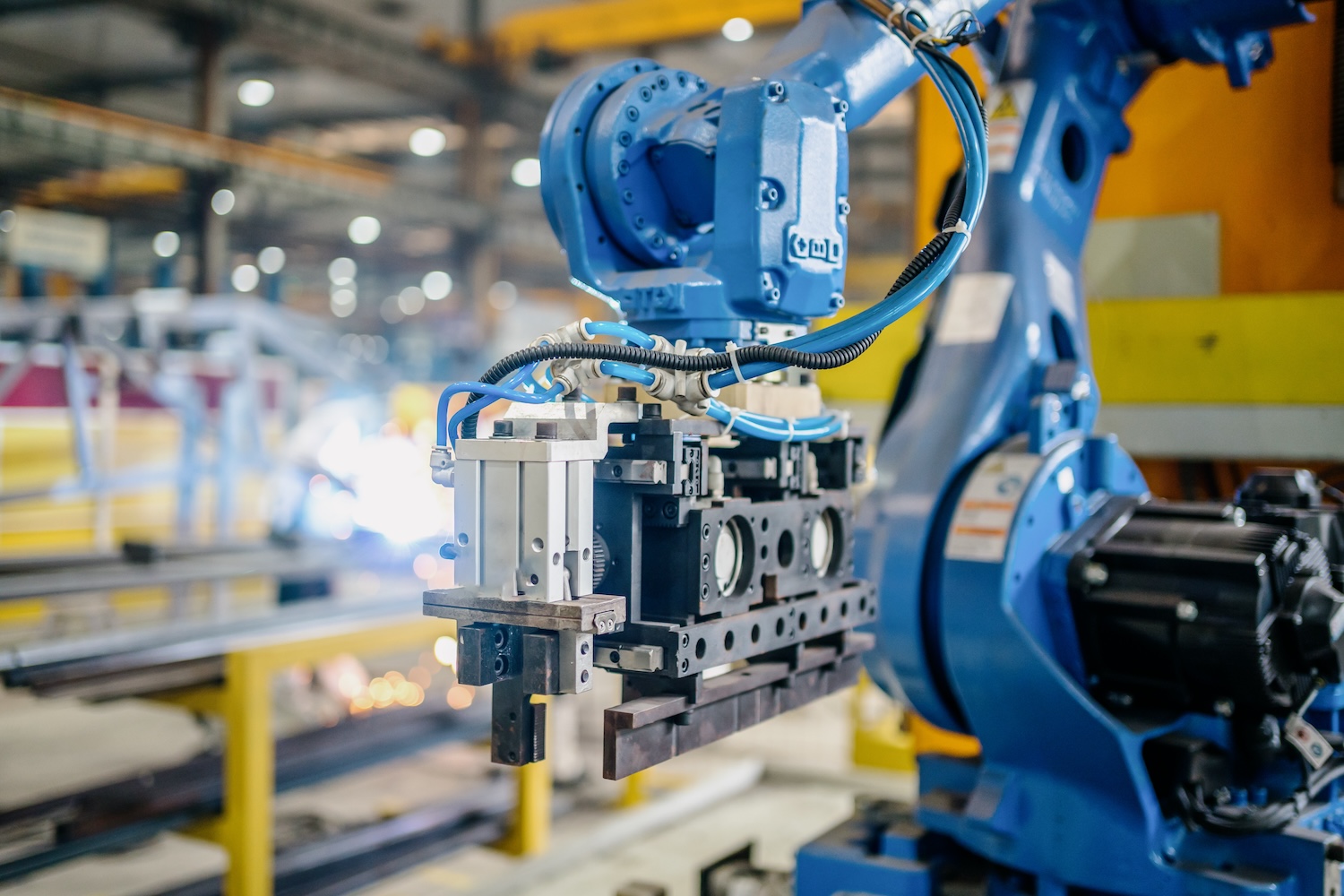India’s strong economic and demographic fundamentals suggest it is poised to be the world’s next industrial powerhouse. Foreign direct investment has surged, and the share of employment in the country’s industrial sector is rising. Propelling India’s manufacturing sector are tailwinds from government incentives and policies, the cost-competitiveness of operating in India, the country’s extensive development of infrastructure, and its embrace of the digital economy.
For companies considering operations in India, several challenges require a response. To meet these challenges, companies can pursue a structured approach that begins with an immersion program, followed by market entry assessment, identification of joint venture partners, and support for planning and implementation.
Strong Economic and Demographic Fundamentals
Not only do strong economic fundamentals enable growth across the board in India, but demographic trends also give the country an edge in terms of its labor market.
Growth in India’s GDP over the last two decades has made it the world’s fifth largest economy, trailing only the United States, China, Japan, and Germany. Given its rate of growth, India is on track to become third largest by 2030, behind only the United States and China. In 2022, India’s 6.5% growth rate was more than double the rates seen in the rest of the world.
India enjoys a demographic dividend that places it at an advantage in attracting investment. Economic growth has enabled steady growth in its middle class, as evidenced by GDP per capita, which rose from $2,087 in 2000 to $8,379 in 2022. In 2021, India’s labor force was the world’s second largest at 508 million, and its growth has been the world’s fastest over the past four decades (Exhibit 1).
Exhibit 1
India’s labor force is the world’s second-largest and has experienced the fastest growth over the past fourdecades

A Rising Manufacturing Hub
India offers investors and businesses favorable conditions for manufacturing. It has a strategic location in South Asia, boasting 13 major ports and 200 minor ports, ranking India 16th as a maritime country. The government has invested in robust infrastructure. Furthermore, India’s increasing attention to protecting intellectual property has contributed to innovation; the country registered more than 35,000 patents in 2021. These factors contribute to a rising ease of doing business in India.
Foreign direct investment (FDI) flowing to India has been increasing (Exhibit 2). India received FDI of $4 billion in 2020 and $27 billion in 2010. In this decade, FDI has attained levels exceeding $60 billion each year.
Exhibit 2
India’s increasing popularity as a business destination is evident in the rising levels of foreign direct investment (FDI)

Though India’s past decade of GDP growth was propelled by services, trends suggest that the next decade’s growth will be propelled far more by manufacturing. From 1960 to 2020, manufacturing’s share of total GDP rose from 10.5% to 17.0%. The government, based on its expectation that India’s share of global manufacturing exports will increase, is seeking to raise manufacturing to 25% of GDP by 2025.
India’s manufacturing output has already been growing. It totaled $75 billion in 2000, then rose to $285 billion in 2010 and $377 billion in 2020. Since then, output has remained above $450 billion (Exhibit 3). Further, the industrial sector is contributing an increasing share to total exports—most notably, exports of oil and coal, chemicals, machinery, and electronics.
Exhibit 3

Another indicator of growth in India’s industrial sector is employment patterns. Industrial employment is growing faster in India than in China, even as US, Japanese, and German employment in industrials has been declining. Most of this activity is occurring at more than 200,000 factories in India’s 44 industrial zones, which provide a myriad of location options for businesses looking to set up manufacturing operations in India.
Tailwinds Driving India’s Manufacturing Sector
Propelling the rise of India’s manufacturing sector are tailwinds in the form of government incentives and policies, the cost competitiveness of operating in India, the country’s extensive development of infrastructure, and the country’s embrace of the digital economy.
Five government initiatives are fueling the manufacturing boom in India:
- The Make in India Initiative aims to make India a global manufacturing hub. Focus sectors include auto and auto components, aviation, and semiconductors.
- India’s National Manufacturing Policy launched in 2011 to raise manufacturing to 25% of India’s GDP by 2022. This initiative, which promoted National Investment and Manufacturing Zones (NIMZs) for advanced infrastructure, is credited for a rise in manufacturing employment from 57 million in 2017–18 to 62.4 million in 2019–20.
- Industrial Corridor Development is a set of 11 projects to deliver plug-and-play infrastructure—for example, a high-speed transportation network with rail and road and modern airports, ports with state-of-the-art cargo-handling equipment, special economic regions/industrial areas, and logistic parks and transshipment hubs.
- The Skill India Initiative launched in 2015 to boost the skills and employability of India’s workforce. Results include India’s move from 13th to 11th place in the WorldSkills Competition in 2022 and the economy’s addition of 5 million manufacturing jobs.
- Special Economic Zones (SEZs) are a government initiative that offers incentives for companies to set up a sourcing or manufacturing platform within an Indian SEZ.
Low labor costs and rising competitiveness are further reasons for investors to see India as a rising global manufacturing hub (Exhibit 4). India is the most cost competitive of the countries in South Asia and has risen from 43rd to 37th place in the 2022 World Competitive Index.
Exhibit 4

India has been adding serious infrastructure muscle in the past decade. A faster pace of new highway construction has enabled a roughly 50% expansion of the national highway over seven years. India’s extensive rail network is expected to handle 12 billion passengers per year and more than 8.2 billion tons of freight by 2031. In ports, 58 projects worth about $5 billion are at various stages of implementation. In energy, India is moving faster than any other country in adding renewable energy capacity to pursue its vision of 500 gigawatts by 2030.
India also has joined the digital revolution, ignited by the Digital India program, initiated to improve connections between citizens and the government via e-services. The country has robust infrastructure, including 1.2 billion telecom and 765 million Mobile Broadband subscribers. Skills development has enabled 62 million workers to participate in the digital economy, and public platforms are making information more widely retrievable.
Meeting Challenges Associated with India Entry
Several challenges are associated with India entry: a lack of structured on-the-ground immersion programs, absence of one-stop knowledge hubs, complexity of selecting the right partners for joint ventures or alliances, and the rigors of end-to-end planning and execution. A structured approach can help businesses navigate these challenges:
- 8- to 10-week immersion program. Such a program outlines manufacturing base requirements (labor, technology, skilled workforce, infrastructure, and supply chain), and participants identify and visit manufacturing locations that fulfill their requirements. Participants meet with policymakers to learn about the regulatory landscape and assess the capabilities of potential joint venture partners.
- Market entry assessment. Such an assessment covers India’s manufacturing market, trends, and growth prospects; legal and regulatory requirements for a new manufacturing site; and potential locations based on resources, labor, and infrastructure.
- Identification of joint venture partners. Companies establish criteria for partner selection and assign roles and responsibilities to company and joint venture partners, orchestrating engagement with key stakeholders of shortlisted partners.
- Planning and implementation support. Finally, preparation of a detailed project plan includes milestones and timelines. Implementing the plan involves regular reviews with key stakeholders, obtaining necessary permits and approvals, a detailed organizational structure, a reliable supply chain, and quality-control measures.
Conclusion
India's burgeoning appeal as a global manufacturing hub faces challenges, yet its immense potential remains undeniable. Partnering with local experts transforms obstacles into steppingstones for success amidst India's robust economic structure and demographic advantage. Evident through surging foreign direct investments and soaring industrial employment rates, India's ascent is propelled by supportive policies, cost competitiveness, infrastructure strength, and digital adoption. However, for companies eyeing entry, acknowledging challenges like limited immersion programs, partner complexities, and the need for comprehensive planning is crucial. A strategic approach encompassing immersion programs, meticulous assessments, partner identification, and robust execution support is vital for navigating India's market complexities. Despite hurdles, India's promise to drive manufacturing growth and serve as a global production hub beckons astute businesses to embark on this transformative journey.























